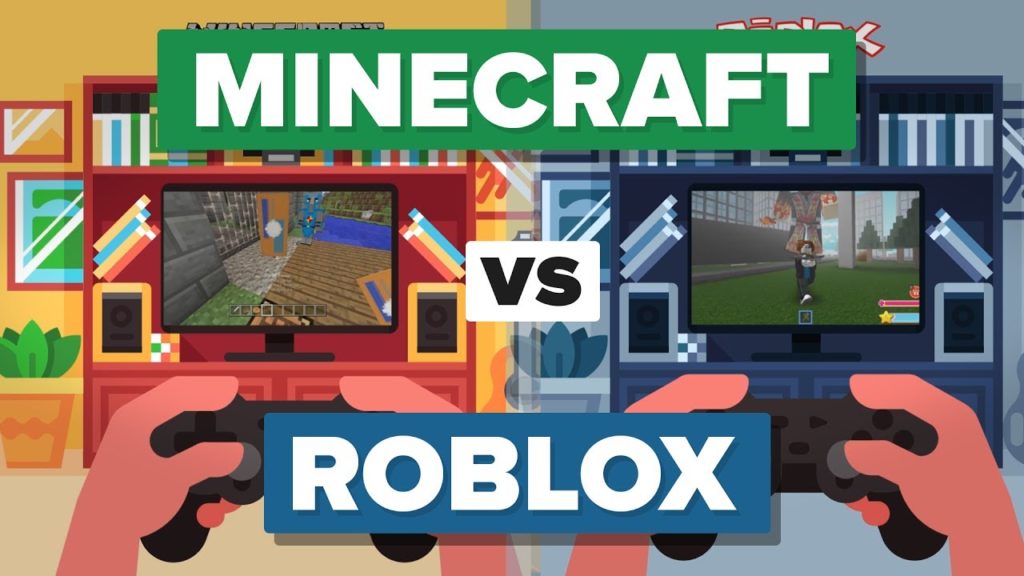Roblox vs Minecraft: Comparing the Building Legends of the Video Game Industry
Early Development and Releases
Roblox was originally launched privately in 2006 under the name DynaBlocks as a beta version, but it wasn’t until 2009 that the platform was officially released to the public under the Roblox name. Meanwhile, Swedish programmer Markus “Notch” Persson began independently developing Minecraft in 2009, inspired by other popular building games at the time. After growing an enthusiastic following with early alpha and beta releases, Minecraft was officially launched in 2011 and quickly skyrocketed in popularity worldwide. Although Roblox came first in its initial private release, Minecraft’s widespread popularity and acclaim after its full launch in 2011 helped it gain more mainstream recognition compared to Roblox in those early years.

Distinct Gameplay Approaches
Minecraft takes a more traditional sandbox survival approach, randomly generating procedurally vast worlds for players to explore and collect resources in. Players can craft a wide array of items, construct buildings out of textured cubes, and defend themselves from various hostile mobs that emerge at night. In contrast, Roblox doesn’t have a singular game itself - it’s an online platform and creator tools that allow users to build their own interactive experiences and games using its robust creation system. Many popular multiplayer genres like obstacle courses, tycoons, and zombie survival games have all been recreated within Roblox by its thriving developer community.
Stylistic Differences in Graphics and Art Design
Minecraft’s cube-based pixel art design evokes nostalgia for 1990s gaming with its chunky 8-bit aesthetics. While simple to run on a variety of devices, some consider its blocky graphics off-putting. Roblox takes a more polished polygonal approach with smoother edges between surfaces. However, graphics quality varies per game on the Roblox platform depending on how individual developers implement their own art styles. Both opt for more simplistic designs that empower creativity and run efficiently across different hardware compared to highly realistic visuals.
Revenue Models and Virtual Economies
Minecraft remains a one-time purchase with optional additional purchases like texture packs or player skins. In contrast, Roblox utilizes a free-to-play model where the core platform is free to access. Developers can earn in-game currency called Robux from purchases within their games, which can then be converted to real-world money. Players can also optionally spend money on game items, avatar accessories, or premium memberships. Robux functions as the virtual currency powering transactions between players and developers across the Roblox universe.
Target Demographics and Community Size
While Minecraft found popularity among diverse age groups, its early following skewed older as the game released in late 2000s during participants’ teen years. Roblox attracted a much younger crowd coming of age in the 2010s smartphone era. The social Roblox platform also fostered vibrant fan communities around various games, with content creators constantly envisioning new experiences. It has grown a truly massive membership base into one of gaming’s largest social networks, dominated by players in their early-to-mid teens.
Platform Reach and Multi-Device Support
Seeking to reach the widest audience possible, Minecraft released on all mainstream consoles, Windows/Mac computers, and mobile devices. An equivalent level of cross-platform compatibility allowed Roblox’s virtual worlds to thrive beyond PC as well, expanding to smartphones, tablets, Xbox One, and other consoles over the years. While both aim for platform agnosticism, Roblox remains most popular through computer or app usage on mobile during players’ daily commutes or free periods at school.
Emerging Esports Scenes and Tournaments
Building competitions and survival-based multiplayer modes like “The Hunger Games” helped Minecraft cultivate a grassroots esports community. Similarly, competitive Roblox games host cash prize tournaments sponsored by the company itself. Fortnite demonstrated how games can ignite large-scale esports scenes almost overnight, and both Minecraft and Roblox continue experimenting with competitive formats that bring out players’ creative skills and strategic teamwork. Over time, these events may serve as a foundation for more established esports leagues in the building genre.
Educational Applications and Cultural Phenomenon
Beyond just gaming, Minecraft found innovative uses in schools thanks to its emphasis on spatial reasoning and problem-solving during construction. Teachers around the world utilize the game to engage students in fields like architecture, engineering, and history. Roblox also inspires creativity but went a step further by becoming a social phenomenon among younger crowds. Popular YouTubers and virtual pop stars emerged from within Roblox, showcasing how online worlds can foster completely new forms of culture. In these ways, both titles leave an impact that transcends the bounds of traditional video games. In summary, Minecraft and Roblox each carved their own niches as dominant building and creation platforms. Minecraft focused on survival gameplay within randomly generated open worlds, while Roblox served as a hub where users design diverse interactive experiences. Their art styles, target demographics, monetization approaches, and cultural footprints differ in several key aspects as well. Both enjoyed massive commercial success by empowering player creativity and community, helping to shape modern gaming trends around user-generated content and social interaction online. Their legacies will continue inspiring new virtual worlds and creative tools for generations to come.